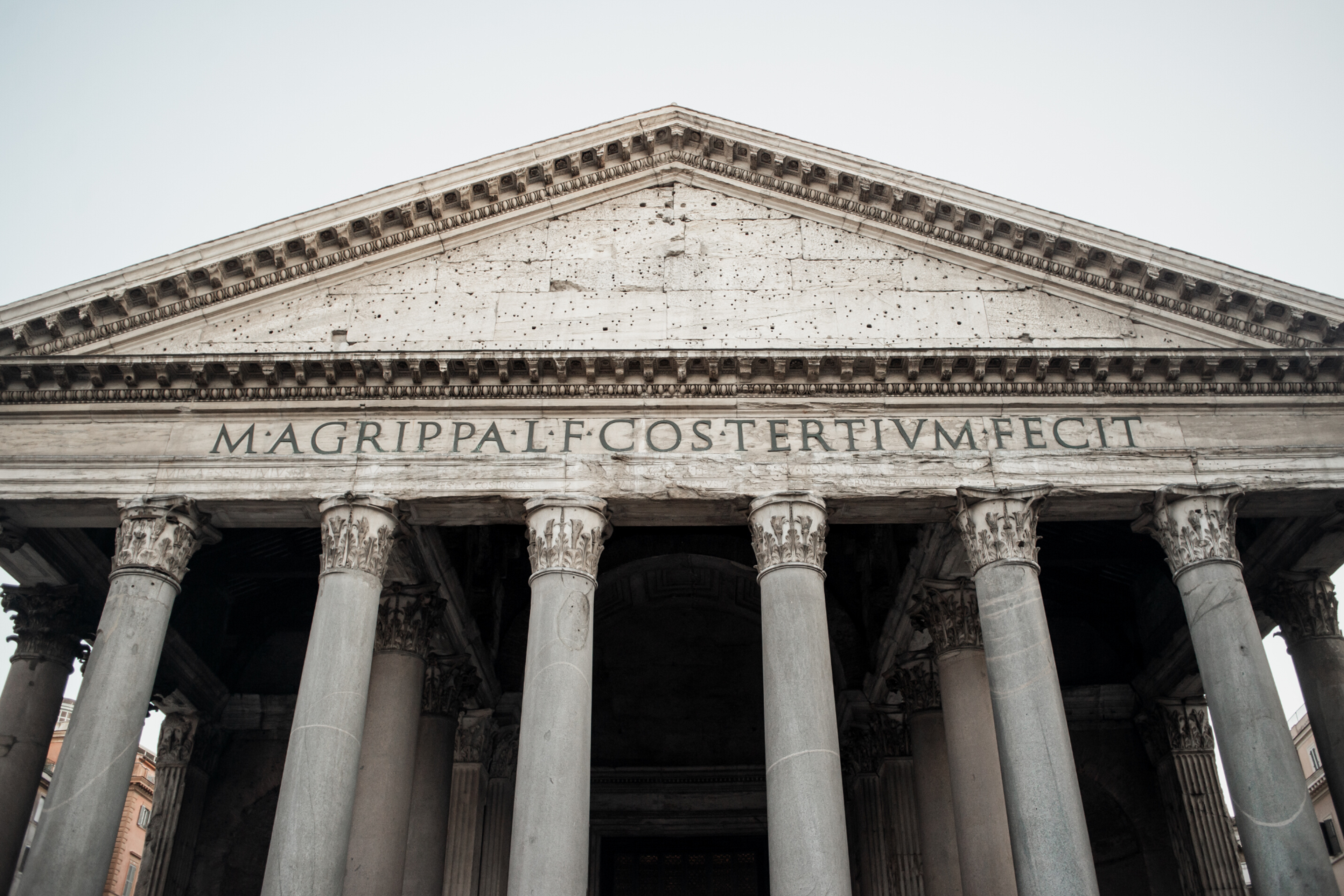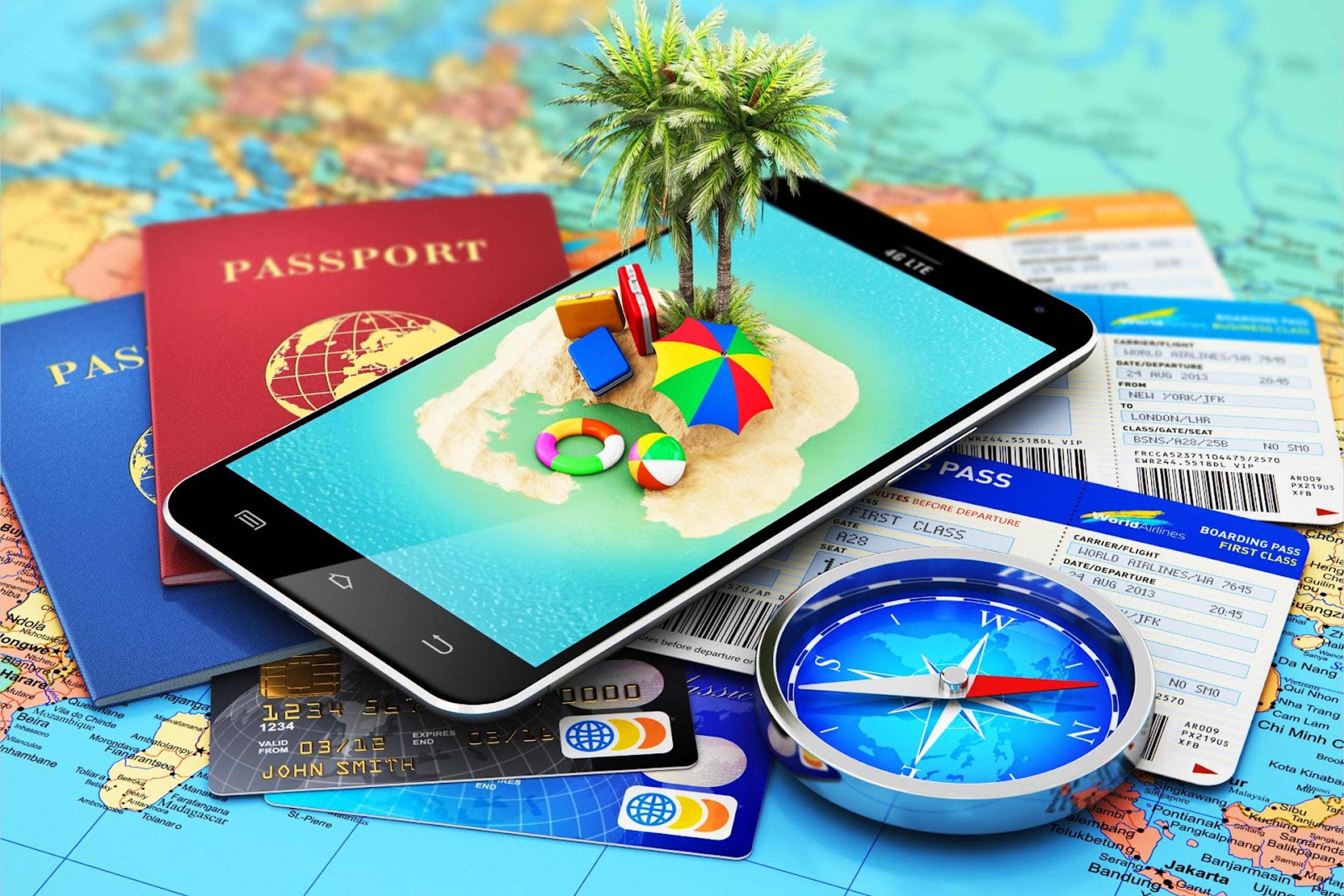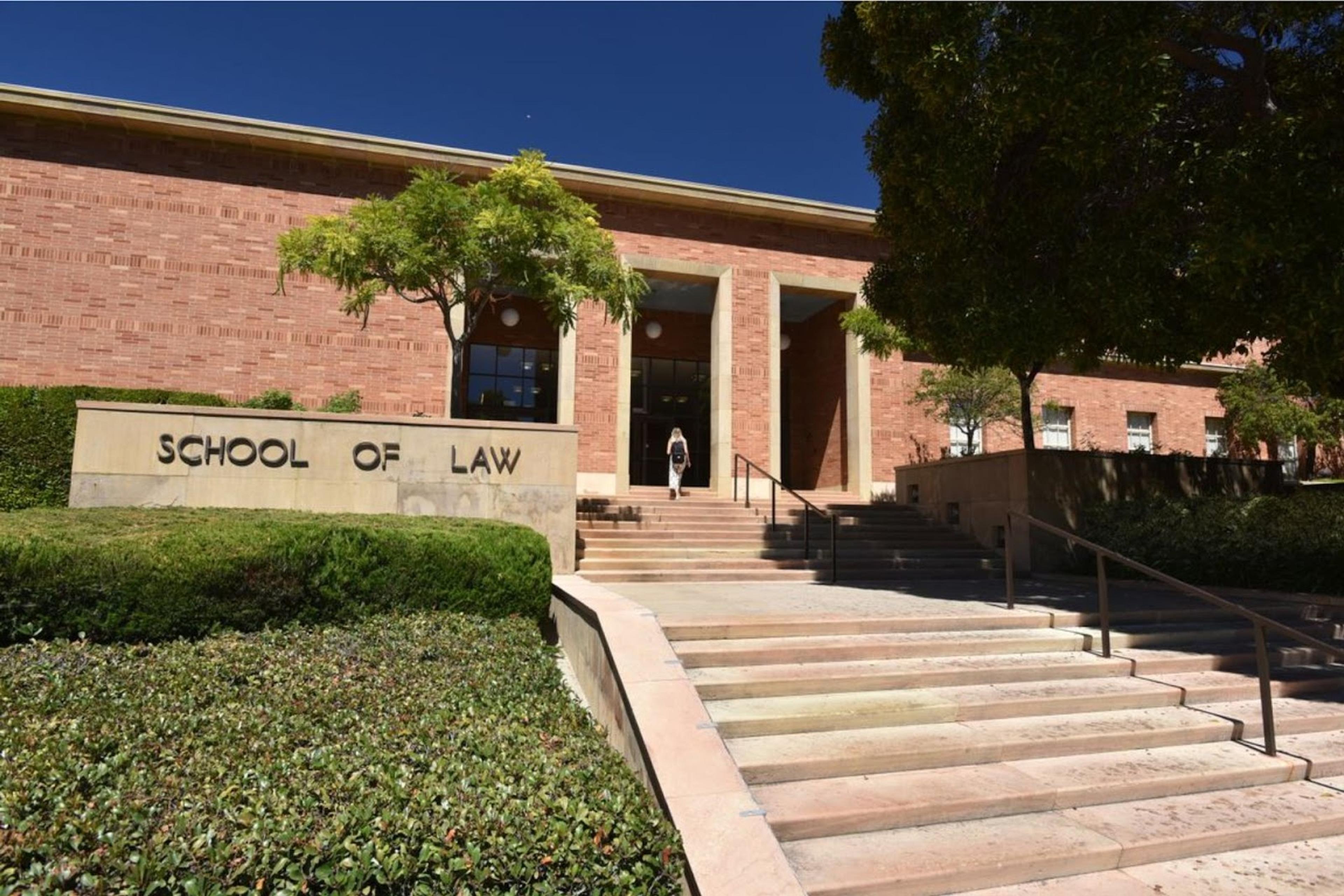25+ Latin Terms Every Law School Student Should Know
As a law student, it is essential to be familiar with Latin terminology. Many Latin terms are commonly used in the legal field, and understanding them can help you better understand legal concepts and cases.
Posted June 13, 2025

Join a free event
Learn from top coaches and industry experts in live, interactive sessions you can join for free.
Table of Contents
As a law student, it is essential to be familiar with Latin terminology. Many Latin terms are commonly used in the legal field, and understanding them can help you better understand legal concepts and cases.
Latin Terms for Law: An Overview
The Significance of Latin Legal Terms
Latin is considered the language of law, and it has been used in legal documents and proceedings for centuries. Moreover, Latin is used in legal maxims, which are short, pithy statements that express a general principle or rule of law. These maxims are often used to guide judges in their decision-making process and to provide a basis for legal arguments. Latin maxims such as "ignorantia juris non excusat" (ignorance of the law excuses no one) and "actus non facit reum nisi mens sit rea" (an act does not make a person guilty unless the mind is also guilty) are commonly used in legal proceedings today.
Brief History and Latin Terminology
Many Latin legal terms used in the legal field originate from the Roman legal system, known for its sophistication and modern-day applications.
The Roman legal system was based on the principle of "jus civile," which means civil law. This system was developed to regulate the relationships between Roman citizens and the state. However, as Rome expanded, the legal system had to adapt to accommodate the legal needs of non-citizens. This led to the development of "jus gentium," which means the law of nations. This system was used to regulate the relationships between Roman citizens, non-citizens, and the state.
The Roman legal system was also known for its use of legal codes. The most famous of these codes is the "Corpus Juris Civilis," which was compiled in the 6th century AD. This code was used as the basis for many legal systems in Europe and beyond. The Roman legal system also had a complex court system, which included both civil and criminal courts. The judges in these courts were known as "praetors" and were responsible for interpreting the law and making decisions in legal cases.
Why Incorporate Latin Terminology in Legal Practice?
- They are widely used in legal proceedings and documents.
- Using the proper Latin terms is crucial for the accuracy and clarity of legal documents, as well as for understanding complex legal concepts.
- Latin terminology has been used in the legal field for centuries and has become deeply ingrained in legal language and culture.
- Understanding Latin terminology can help lawyers communicate more effectively with colleagues, and clients, and enhance their credibility and professionalism in the legal community.
25+ Latin Legal Terms to Know
At-a-Glance
Here are all the terms, read more to find out origins, translations, example use cases, and more!
- Habeas Corpus
- Prima Facie
- In-Camera
- De Jure vs. De Facto
- Ex Parte
- Ad Hob
- Amicus Curiae
- Subpoena Duces Tecum
- Nolo Contendere
- Caveat Emptor
- Scienter
- Res Ipsa Loquitur
- Malum Porhibitum vs. Malum In Se
- Qui Tam
- Stare Decisis
- Lex Loci Delicti Commisi
- Mens Rea
- Res Judicata
- Ex Post Facto
- Respondeat Superior
- Actus Reus
- Pro Bono
- Quid Pro Quo
- Sui Generis
- In Rem
- Bona Fide
- Per Se
1. Habeas Corpus
- Translation: “Show me the body” or “You shall have the body”
- Most common application: Protection of individual freedom against executive power
- Examples of Use:
- Wade vs. Mayo (1984)
- Nailor vs. State (1820-1863)
- Arnold vs. USA (2004)
The Latin term "habeas corpus" is a fundamental principle in both the American legal system and common law traditions. It is a legal action or writ by means of which individuals can seek relief from unlawful detention. The right to petition for a writ of habeas corpus is enshrined in the U.S. Constitution, specifically in Article One, Section 9, Clause 2, which states that "The privilege of the writ of habeas corpus shall not be suspended, unless when in cases of rebellion or invasion the public safety may require it."
In U.S. legal proceedings, habeas corpus serves several key functions:
- Protection Against Illegal Detention: It allows a person who is detained or imprisoned to challenge the legality of their detention. A court issuing a writ of habeas corpus commands the entity detaining the person to bring the detainee to court and show a valid reason for the person's detention.
- Federal Courts: While habeas corpus petitions can be filed in state courts, they are also commonly filed in federal courts, especially if the petitioner believes that state court proceedings have violated federal laws or constitutional rights.
- Death Penalty and Life Imprisonment Cases: Habeas corpus petitions are often associated with attempts to overturn convictions in serious cases, including those involving the death penalty or life imprisonment.
- Post-conviction Relief: It provides a mechanism for seeking post-conviction relief, especially when new evidence has emerged, or when the conviction is argued to have been based on constitutional violations.
Originating from English common law, the concept of habeas corpus dates back to the Magna Carta of 1215, though the form and function of habeas corpus as recognized today developed in England during the 17th century. Its purpose was to strengthen the power of the courts to challenge and inquire into the legality of a person's detention, thus offering protection against arbitrary state action. The adoption of habeas corpus into U.S. law was a direct result of its significance in English law, reflecting the Founding Fathers' commitment to legal principles that protect individual freedoms against governmental overreach.
2. Prima Facie
- Translation: "At first sight" or "On its face"
- Most Common Application: Used to establish that there is enough evidence for the case to go forward to trial or the next stage of legal proceedings
- Examples of Use:
- Swierkiewicz vs. Sorema (2002)
- Hernandez vs. New York (1991)
- Brown vs. Board of Education (1974)
Prima facie refers to evidence that, in the absence of being rebutted, is sufficient to prove a particular proposition or fact. In legal contexts, a prima facie case is one where the preponderance of the evidence before trial is enough to prove the case unless there's significant contradictory evidence presented during the trial.
In U.S. legal proceedings, the term is used in various contexts:
- Civil Litigation: In civil cases, a plaintiff must establish a prima facie case to survive a motion for summary judgment or to proceed to trial. This means presenting enough evidence on each element of the claim to support a verdict in the plaintiff's favor, if the defendant does not offer any contradictory evidence.
- Criminal Law: In criminal prosecutions, the prosecution must often show a prima facie case that the defendant committed the crime to avoid a dismissal of the charges. This is particularly relevant during preliminary hearings or when arguing against a motion to dismiss.
- Employment Discrimination: In cases of employment discrimination, the concept is used to describe the minimum amount of evidence needed for the plaintiff to prove discrimination occurred, thus shifting the burden of proof to the employer to provide a non-discriminatory reason for the adverse employment action.
- Burden of Proof: The term is also associated with the shifting of the burden of proof. Once a party establishes a prima facie case, the burden shifts to the opposing party to refute or provide evidence to the contrary.
The concept of “prima facie” emphasizes the importance of initial evidence and its sufficiency to establish a legal claim or defense unless contradicted and overcome by other evidence. This principle allows courts to manage the flow of cases efficiently by setting a standard for the minimum amount of evidence necessary to demonstrate a viable legal claim or defense.
3. In-Camera
- Translation: "In chamber"
- Most Common Application: Court proceedings held in private (not open to the public)
- Examples of Use:
- Ponte v. Real (1985)
- United States vs. Zolin (1989)
- Respondent Grail, LLC Fourth Motion (2021)
The Latin term "in camera" is used in U.S. legal proceedings to refer to a situation where a judge reviews evidence or hears testimony in a private setting, outside the presence of the public and the jury. This practice is typically employed for several reasons:
- Protect Sensitive Information: To protect sensitive or confidential information, such as trade secrets, personal information, or matters of national security.
- Protect Vulnerable Witnesses: To provide a safe environment for vulnerable witnesses, such as children or victims of sexual crimes, allowing them to testify without the stress of a public courtroom.
- Prevent Prejudice: To prevent information that might unfairly prejudice the jury against one of the parties from becoming public.
In-camera proceedings are a tool the court can use to balance the public's right to an open trial with the need to protect sensitive information or individuals. The judge has the discretion to decide when an in-camera review is necessary and must ensure that the use of such a procedure does not infringe on the parties' legal rights, including the right to a fair trial.
The origin of "in camera" stems from Roman law, but does not have a specific, singular origin in Roman legal practices. Instead, its modern legal application is more directly inherited from the common law tradition, which itself absorbed and adapted many principles and terminologies from Roman law and Latin language over centuries. In Roman law, privacy and confidentiality in legal processes weren't conceptualized in the same way they are today. Roman legal proceedings were often public, and the notion of "in camera" in its current form—where a judge reviews evidence or conducts hearings in private—did not exist as a distinct legal procedure in ancient Rome.
So, while "in camera" is linguistically and conceptually rooted in the Latin language and influenced by the broad legal traditions of Roman law, its specific application in modern legal proceedings as a mechanism for private judicial review or hearings developed later, within the framework of common law and its adaptations in various jurisdictions, including the United States.
4. De Jure vs. De Facto
- Translations:
- De Jure: “Of law” or “by law”
- De Facto: “In fact” or “in practice”
- Most Common Application: Used to distinguish between what is legally recognized (“de jure”) versus what exists in reality or practice (“de facto”)
- Examples of Use:
- De Jure is used to refer to something that is legally established, such as de jure standards or de jure segregation. For example, a de jure government is one that has been legally established and recognized in accordance with the constitution and laws of the land.
- De Facto is used to describe situations that exist in reality, even if not legally recognized. For example, a de facto relationship is recognized as existing in fact, even if the parties have not fulfilled the legal requirements to formalize their union. De facto segregation, as another example, refers to segregation that occurs in practice (e.g., through housing patterns and economic disparities) but is not explicitly required by law.
These terms were adopted into English common law and subsequently into American legal discourse, where they serve to make important distinctions between legal formalities and practical realities. This usage allows for nuanced discussions and analyses of legal issues, policies, and social conditions, highlighting the gap that can exist between the law (de jure) and actual practices or circumstances (de facto).
5. Ex Parte
- Translation: "On behalf of one party" or “from one party”
- Most Common Application: Legal proceedings involving only one party without the presence or participation of the opposing party
- Examples of Use:
- Ex Parte Siebold (1879)
- Ex Parte United States (1916)
- Ex Parte Bradley (1868)
Ex parte communications or proceedings are generally disfavored in the interest of fairness, as they go against the principle of giving both parties the opportunity to be heard. However, there are specific circumstances under which ex parte actions are permitted or necessary, such as:
- Temporary Orders for Protection: In cases involving domestic violence, a petitioner may seek a temporary restraining order against the alleged abuser without the abuser being present or notified in advance. This is to ensure the immediate safety of the petitioner.
- Emergency Decisions: When an immediate decision is needed to prevent irreparable harm, and there is no time to notify or include the other party, ex parte decisions may be authorized.
- Administrative Convenience: In some procedural or administrative matters where the impact on the opposing party is minimal or non-existent, ex parte requests may be considered.
In the United States, the use of ex parte orders is carefully limited by constitutional guarantees of due process under the Fifth and Fourteenth Amendments, necessitating that any such order must be temporary and subject to a prompt and fair opportunity for the affected party to contest it. Notably, some special courts, such as the Foreign Intelligence Surveillance Court, operate on a permanent ex parte basis as directed by statute, mainly due to the sensitive nature of national security matters
6. Ad Hoc
- Translation: "For this purpose" or “for this”
- Most Common Application: Used to describe decisions, committees, or actions that are taken for a specific purpose
- Examples of Use:
In U.S. legal proceedings, the term "ad hoc" is used particularly when addressing issues unique to a particular case or situation, without consideration for wider application. These are often temporary due to their specificity. For example, an ad hoc committee might be formed to investigate a particular legal issue or concern that falls outside the purview of existing committees.
The term was initially used in Britain as early as 1545 in Latin texts, at a time when the English language was significantly influenced by Latin due to its use by the church and educational institutions. The phrase was quickly adopted into legal and judicial writings in the mid-1500s, reflecting its utility in addressing specific issues or tasks that arise outside of regular or planned processes.
7. Amicus Curiae
- Translation: "Friend of the court"
- Most Common Application: Refers to someone who is not a party to the case but offers information, expertise, or insight
- Examples of Use:
- Obergefell vs. Hodges (2015)
- NFIB vs. Sebelius (2012)
- Capitol Records vs. ReDigi (2018)
An amicus curiae may submit a brief (“amicus brief”) to the court on a matter of law that requires special attention or on which there is a significant interest, providing additional perspective that might not be fully addressed by the parties directly involved in the case. This practice is common in appellate courts, including the Supreme Court, where decisions can have wide-ranging implications.
Historically, the concept embodies the principle that justice benefits from a full and fair consideration of all relevant perspectives, not just those of the direct litigants. Over time, the amicus curiae has evolved from an impartial adviser to the court into a tool used by various interest groups to lobby the courts on issues of broad social and legal importance, thereby expanding the scope of legal arguments and considerations a court may take into account when making its decision.
8. Subpoena Duces Tecum
- Translation: "Under penalty to bring with you" or “under penalty you shall bring it with you”
- Most Common Application: A subpoena (court order) that requires the person to bring physical evidence with them
- Examples of Use:
Subpoena Duces Tecum is a type of subpoena that requires a person to produce documents, materials, or other tangible evidence at a trial, hearing, or deposition. The use of subpoenas, including the subpoena duces tecum, is a vital part of the discovery process in both civil and criminal litigation, enabling parties to gather evidence that is pertinent to the case. This can include documents like company records, contracts, emails, or any other material relevant to the issues being litigated
In Roman law, the subpoena was known as the “praecipe” and was used to summon witnesses to testify in court. In English law, the use of subpoenas–including subpoena duces tecum–dates back to at least the 14th century. It was developed as a judicial order to compel the appearance of a witness at court, with the extension to include the carrying of documents and tangible evidence to support the legal process. This evolution reflected the growing complexity of legal disputes and the corresponding need for documentary evidence in adjudicating these disputes.
9. Nolo Contendere
- Translation: "I do not wish to contend"
- Most Common Application: A type of defendant plea in a criminal case, neither admitting nor denying charges
- Examples of Use:
- United States vs. Agnew (1977)
- Hudson vs. United States (1926)
- Rusheen vs. Drews (2002)
When a defendant in a criminal case pleads nolo contendere, they do not admit guilt but also do not contest the charges against them. This type of plea is similar to a guilty plea in that it allows the court to proceed to sentencing without a trial, but it differs in that the plea cannot be used against the defendant in a civil lawsuit arising from the same facts as the criminal case.
The use of nolo contendere in the United States legal system was formally recognized in federal courts with the enactment of Rule 11 of the Federal Rules of Criminal Procedure in 1946, which allowed for such pleas with the court's consent. However, its use predates this formal recognition, with instances of its application in various state courts prior to the 20th century. The plea's utility lies in its ability to resolve legal proceedings efficiently while providing defendants with a tool to avoid admitting guilt, especially useful in mitigating the potential consequences in related civil litigation.
The acceptance and implications of a nolo contendere plea can vary by jurisdiction within the United States, with some states allowing it under certain conditions and others not recognizing it at all. The plea's admissibility in civil cases also varies, with the Federal Rules of Evidence (Rule 410) generally prohibiting its use in subsequent civil proceedings, reflecting its nuanced position within the American legal landscape.
10. Caveat Emptor
- Translation: "Buyer beware" or “let the buyer beware”
- Most Common Application: Reminder to buyers of their responsibility in transactions
- Examples of Use:
- Stambovsky vs. Ackley (1991)
- Johnson vs. Davis (1985)
- Chandelor vs. Lopus (1603)
Caveat emptor is a principle that warns the buyer to perform due diligence before making a purchase. In the context of U.S. legal proceedings, it signifies that the buyer assumes the risk for the quality and condition of goods or property purchased unless they are protected by a warranty or there are misrepresentations by the seller. The principle places the onus on the buyer to be cautious and informed, limiting the buyer's recourse against the seller for defects in the purchased item.
The concept of caveat emptor has been a part of English law for centuries, likely used informally in trade and market transactions long before being codified in legal texts. The first known case in England was in 1603, when a buyer bought a £100 bezoar stone for its healing properties and sued the seller when it didn’t work as he had hoped. In the United States, the principle became a foundational element of commercial and property law as the country's legal system developed. While specific dates for its first use in U.S. legal proceedings are hard to pinpoint due to its deep roots in common law, it has been a long-standing principle guiding transactions.
Get Help From an Expert
Preparing for law school, taking the LSAT, or getting ready for your legal career? Get application and career help from an expert. Below are some of our top coaches, browse them all here.
11. Scienter
- Translation: "Knowingly" or “with knowledge”
- Most Common Application: Awareness of wrongdoing or harm
- Examples of Use:
- Morissette vs. United States (1952)
- United States vs. Langley (1995)
- Ruan vs. United States (2022)
In U.S. legal proceedings, the term "scienter" is used to denote knowledge or intent, particularly regarding the falsity of a statement or the wrongful nature of an act. It is a crucial element in various areas of law, especially in securities law and torts, where proving a defendant's fraudulent intent or recklessness is necessary for establishing liability. In securities law, for example, scienter is required to prove violations of Section 10(b) of the Securities Exchange Act of 1934 and Rule 10b-5 issued thereunder, where a party must knowingly or recklessly make a false statement or omit material information that misleads investors.
The specific use of scienter in the context of U.S. law has evolved over time, particularly with the development of securities regulations in the 20th century and the refinement of the common law of torts. Its formal recognition in U.S. securities law can be traced back to the Securities Exchange Act of 1934 and the landmark case Ernst & Ernst v. Hochfelder in 1976, where the U.S. Supreme Court held that a violation of Rule 10b-5 requires proof of scienter.
In tort law, the concept of scienter has been present since at least the 19th century, especially in cases involving animals known to be dangerous, where the owner's knowledge of the animal's propensity for harm is a key factor in liability.
12. Res Ipsa Loquitur
- Translation: "The thing speaks for itself"
- Most Common Application: Presumption of negligence without direct evidence
- Examples of Use:
- Holzhauer vs. Saks Co. (1997)
- Sweeney vs. Erving (1913)
- Scott vs. London St. Catherine’s Dock (1865)
The principle of Res Ipsa Loquitur allows a plaintiff to infer negligence on the part of the defendant based on the very nature of the accident or injury, under circumstances where the event that caused the harm would not ordinarily happen without negligence. It shifts the burden of proof to the defendant to demonstrate that they were not negligent (because the type of accident that occurred usually arises from negligence).
The term and the doctrine were first articulated in the 1863 English case Byrne v. Boadle, where a barrel of flour fell from a second-story warehouse window onto the plaintiff as he walked below, and the court held that the facts of the accident allowed for a presumption of negligence on the part of the warehouse operator. The doctrine was recognized because the accident was of a kind that does not happen in the absence of someone's negligence, and the instrument causing the injury was under the exclusive control of the defendant.
Res Ipsa Loquitur is particularly useful in complex cases where the specific mechanism of injury is not clear, but the responsibility for the type of harm can be closely associated with the defendant's duty of care, such as in medical malpractice or product liability cases.
13. Malum Prohibitum vs. Malum In Se
- Translation: "Wrong because prohibited" vs. "Inherently wrong"
- Most Common Application: Differentiating two different types of offenses in law
- Examples of Use:
- Herald Publishing Co. vs. Bill (1955)
- Noble vs. State (1967)
- Legally Blonde (2001)
The Latin terms "malum prohibitum" and "malum in se" distinguish between two types of wrongful acts based on their nature and societal perception.
- Malum Prohibitum: This term translates to "wrong because it is prohibited." It refers to actions that are considered wrong only because they are explicitly prohibited by statute or regulation, not because they are inherently immoral. Typical examples of malum prohibitum offenses include parking violations, jaywalking, and other regulatory infractions. These are acts that society regulates through laws to maintain order, safety, and welfare, rather than because they are inherently evil or morally reprehensible.
- Malum In Se: Contrasting with malum prohibitum, "malum in se" means "wrong in itself." It describes actions that are universally considered inherently wrong, immoral, or evil, such as murder, theft, and rape. These acts are prohibited by law because they violate basic moral principles and are harmful to individuals and society at large.
The use of malum prohibitum and malum in se in U.S. legal discourse has been prevalent since the country's founding, as these concepts help to frame the legislative intent behind criminal laws and the moral culpability of those who violate them. They play a crucial role in legal analysis, especially in criminal law, by helping to determine the severity of offenses and the appropriate level of punishment.
14. Qui Tam Lawsuits
- Translation: “Qui tam” is short for the Latin phrase, “qui tam pro domino rege quam pro se ipso in hac parte sequitur,” which means, "he who sues in this matter for the king as well as himself"
- Most Common Application: Private individuals suing on behalf of the government for fraud
- Examples of Use:
Qui tam lawsuits are a type of legal action under the False Claims Act (FCA) that allows a private individual, known as a "relator," to file a lawsuit on behalf of the U.S. government against parties alleged to have defrauded government programs. The relator, if successful, receives a portion of the recovered damages as a reward.
The specific origin of qui tam actions can be traced back to medieval England, where they were used as a means to enforce royal laws when the king could not enforce widespread compliance due to limitations in resources or reach. These actions incentivized private citizens to act as informants and enforce laws on the crown's behalf, offering them a share of the penalties as a reward.
Qui tam provisions were first introduced into the FCA in 1863 during the Civil War, primarily to combat fraud by contractors who supplied the Union Army with goods and services (Abraham Lincoln was a major advocate). The law aimed to encourage insiders privy to fraud against the government to disclose such wrongdoing by allowing them a share in any recovered damages.
The FCA has undergone several amendments, significantly in 1986, to increase incentives for whistleblowers and broaden the scope of the law, making it a more effective tool against fraud. Qui tam lawsuits have become a powerful mechanism for combating fraud against government programs, including healthcare fraud, defense contractor fraud, and other types of fraud that result in financial losses to the U.S. government.
15. Stare Decisis
- Translation: "To stand by things decided"
- Most Common Application: Doctrine requiring courts to follow precedent
- Examples of Use:
- Salman vs. United States (2016)
- English vs. United States (2011)
- Roe vs. Wade (2022)
Stare Decisis is a legal principle that dictates courts should follow the precedents set by previous decisions when ruling on cases with similar facts. Stare decisis ensures legal consistency, predictability, and stability by obliging courts to adhere to established legal rulings, unless there is a compelling reason to overturn them. This principle is fundamental to the common law system and applies to both federal and state courts in the United States.
The use of stare decisis in the American legal system was established early in the country's history, becoming a cornerstone of legal analysis and decision-making. One of the earliest and most significant affirmations of stare decisis in U.S. jurisprudence can be traced back to the early 19th century. In the landmark case of Marbury v. Madison (1803), while not explicitly mentioning "stare decisis," Chief Justice John Marshall's decision laid the groundwork for the U.S. Supreme Court's authority to apply judicial review, which has since been adhered to as a vital precedent in American law. The explicit acknowledgment and application of stare decisis as a guiding principle have been evident in countless decisions since then, shaping the development of U.S. law across all areas.
16. Lex Loci Delicti Commisi
- Translation: "The law of the place where the tort was committed"
- Most Common Application: Determining applicable jurisdiction in conflict of laws cases
- Examples of Use:
This principle is used in conflict of laws to determine that the substantive law applicable to a tort case is the law of the place where the tort occurred. This approach helps resolve legal disputes that involve cross-jurisdictional elements, such as incidents occurring in one state but involving parties from another, or even international scenarios.
The use of "lex loci delicti commissi" in the United States dates back to the 19th century when the country's legal system began to deal more frequently with cases involving parties and actions across state lines. As commerce and travel increased, so did the need for a clear rule to determine which jurisdiction's laws should apply in tort cases. Over time, while "lex loci delicti commissi" has remained a foundational concept in conflict of laws, the modern approach to choice of law in tort cases has evolved. Courts and legislatures have increasingly considered other factors, such as the residence of the parties, the place where the relationship between the parties is centered, and where the loss or injury is felt, leading to more flexible and equitable outcomes.
17. Mens Rea
- Translation: "Guilty mind" or “criminal intent”
- Most Common Application: Mental element required for criminal liability
- Examples of Use:
- Flores-Figueroa vs. United States (2009)
- Counterman vs. Colorado (2023)
- Staples vs. United States (1994)
The principle of Mens Rea refers to the mental state a person must be in while committing a crime for it to be considered intentional, and thus punishable. Mens rea is a fundamental component of criminal liability, serving to distinguish between different degrees of wrongdoing, such as the difference between premeditated murder and manslaughter. The requirement of mens rea ensures that individuals are only held criminally responsible for acts committed with a certain level of intent or knowledge of wrongdoing.
The origin of the term lies in the Doctrine of Dolus in Roman law, which correlated the psyche of the actor and their unlawful act. Roman legal thinkers recognized the importance of the offender's state of mind in determining culpability, which was then absorbed into English common law and later American jurisprudence. In England, the concept of mens rea became increasingly codified in legal texts and case law during the medieval and early modern periods, laying the groundwork for its role in criminal law today.
18. Res Judicata
- Translation: "A matter judged"
- Most Common Application: Prevents the same matter from being litigated again once it has been finally decided by a court
- Examples of Use:
- Weiss vs. Weiss (2010)
- State vs. Dann (1997)
- Clothier vs. Counseling (2003)
In U.S. legal proceedings, res judicata refers to a fundamental principle that a final judgment on the merits by a court of competent jurisdiction is conclusive on the parties in any later suit on the same cause of action. Res judicata prevents parties from relitigating the same dispute after it has been definitively settled in order to ensure the finality of judgments, conserve judicial resources, and protect parties from the burden of multiple lawsuits.
This concept was integral to the development of the legal systems throughout Europe, particularly in the common law tradition from which the American legal system is derived.
Res judicata encompasses two main concepts: claim preclusion and issue preclusion (also known as collateral estoppel). Claim preclusion refers to the effect of a judgment in preventing litigation of the same cause of action in a future lawsuit, while issue preclusion prevents the same parties from relitigating the same issue in a different cause of action. Together, these principles uphold the integrity of judicial decisions and the legal system's efficiency by preventing the same disputes from being litigated repeatedly.
19. Ex Post Facto
- Translation: "After the fact" or “from a thing done afterward”
- Most Common Application: Refers to a law that retroactively changes the legal consequences or status of actions that were committed before the enactment of the law
- Examples of Use:
Ex post facto laws are statutes that retroactively change the legal consequences (or status) of actions that were committed, or relationships that existed, before the enactment of the law. Specifically, in a criminal context, these laws either make illegal an action that was legal when committed, increase the penalties for an infraction after it was committed, or change the rules of evidence to make conviction easier. The U.S. Constitution, in Article I, Sections 9 and 10, expressly prohibits both the federal government and the states from enacting ex post facto laws, reflecting a fundamental principle intended to protect individuals from retroactive and potentially unjust legal action.
The specific origin of the prohibition against ex post facto laws lies in the desire to provide a stable and fair legal framework that prevents arbitrary and vindictive legislative acts. The explicit prohibition of ex post facto laws in the U.S. Constitution was first used in 1787, with the document's drafting and subsequent ratification in 1788. In addition, James Madison included it in his Federalist no. 44 papers in 1788. The framers included this prohibition based on their understanding of history, legal principles, and the abuses of legislative power they witnessed or learned from other nations' experiences.
Throughout U.S. history, the Supreme Court has interpreted and applied the ex post facto clause in various rulings to determine the constitutionality of legislative acts. These interpretations have helped clarify the scope and limitations of the government's power to enact retroactive laws, especially in criminal cases, thereby reinforcing the legal system's integrity and the protection of individual rights against retrospective legislative actions.
20. Respondeat Superior
- Translation: "Let the superior answer"
- Most Common Application: Doctrine that holds employers liable for wrongful acts committed by an employee or agent while they are employed
- Examples of Use:
Repondeat Superior is a legal doctrine holding that an employer or principal can be held vicariously liable for the wrongful acts of an employee or agent, committed within the scope of their employment or agency. This principle allows for plaintiffs to seek damages from employers or principals who have a deeper capacity to pay for damages caused by their employees or agents, under the rationale that employers are responsible for the actions of their employees when those actions are undertaken in the course of their employment.
The doctrine reflects a long-standing principle that masters are liable for the torts (wrongs) of their servants committed in the course of their service. This principle was adapted from even older legal traditions, including Roman law, which recognized a form of vicarious liability in the relationships between masters and servants or owners and slaves.
7 Other Terms to Know
- Actus Reus: The actual act of committing a crime, as opposed to the intent (mens rea) behind the act.
- Pro Bono: "For the good"; professional work undertaken voluntarily and without payment or at a reduced fee as a public service.
- Quid Pro Quo: "Something for something"; an exchange of goods or services, where one transfer is contingent upon the other.
- Sui Generis: "Of its own kind"; unique or in a class by itself.
- In Rem: "Against a thing"; legal action directed against property, rather than against a person.
- Bona Fide: "In good faith"; genuine, without the intention to deceive.
- Per Se: "By itself"; something that is inherently or by definition the case.
Read these articles next:
Browse hundreds of expert coaches
Leland coaches have helped thousands of people achieve their goals. A dedicated mentor can make all the difference.


















